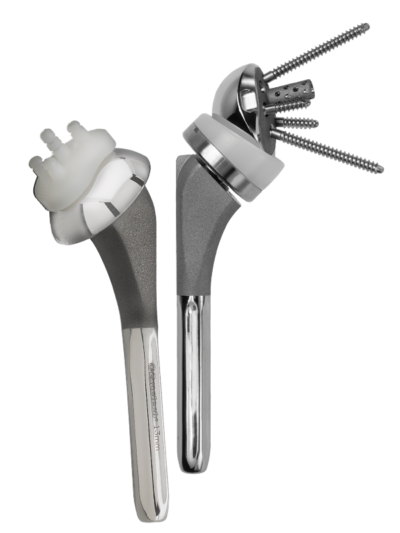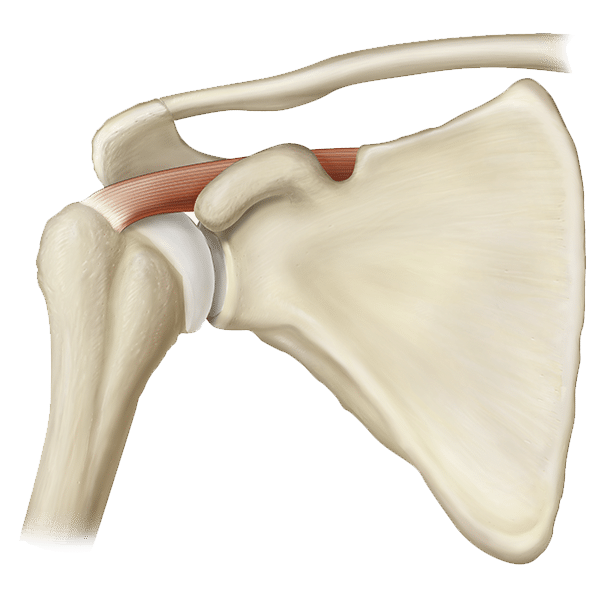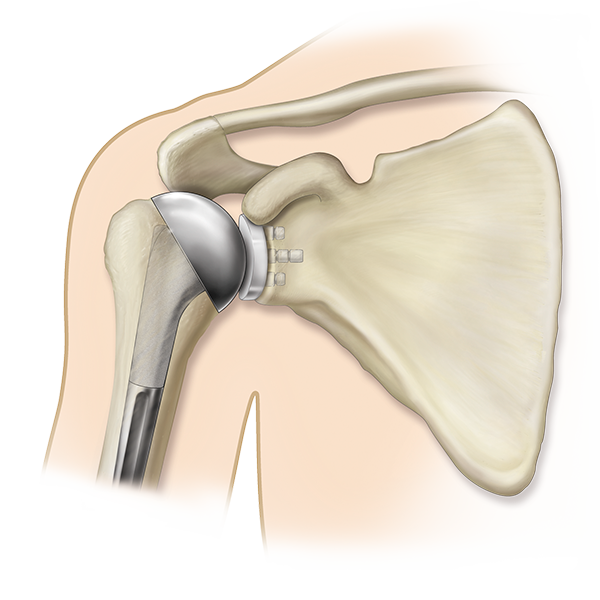Who does shoulder surgery? Search by specialty and location to find a surgeon near you.
How Does Your Shoulder Work?
The shoulder is comprised of three main bones: the collarbone (clavicle), the shoulder blade (scapula) and the upper arm bone (humerus). The glenoid (part of the scapula) and humeral head (part of the humerus) are normally the parts of the shoulder that have to be replaced because they rub together when you move your arm.
In a healthy shoulder, these portions of bone are covered with cartilage, which allows for painless motion—lifting, pushing and pulling. But arthritis can damage this protective cartilage, which makes these motions painful.
Arthritis is one of the most common conditions that causes wear and tear to your joint cartilage and develops after years of constant motion and pressure on the joints. If non-surgical treatment options such as medication, physical therapy or lifestyle changes fail to provide relief, your surgeon may recommend shoulder replacement surgery.
What is Shoulder Replacement Surgery?
During a total shoulder replacement surgery, a doctor takes out the damaged parts of your shoulder joint and replaces them with new parts.
Your surgeon will:
- Put you under anesthesia.
- Make a cut so they can access your shoulder joint.
- Remove the damaged parts of your bones or cartilage.
- Replace the removed parts with metal and plastic implants.
Shoulder Replacement Options
A primary, or anatomic, shoulder replacement is one type of surgery your doctor may want to do.
During primary shoulder replacement surgery, your surgeon will:
- Make a cut in the front of the shoulder so they can access your joint.
- Take out the damaged bone and cartilage.
- Remove the head of the bone at the top of your arm.
- Place a metal stem into your arm bone.
- Place a plastic socket implant on your shoulder blade.
If you have damage to your rotator cuff muscle, your surgeon may want to do a reverse total shoulder replacement surgery.
During reverse total shoulder replacement surgery, your surgeon will:
- Make a cut in the front of the shoulder, so they can access your joint.
- Take out the damaged bone and cartilage.
- Remove the head of the bone at the top of your arm.
- Attach a metal ball to the shoulder blade.
- Place a metal implant into the upper arm bone.
- Attach a plastic socket to the implant in the upper arm bone.
To plan a traditional primary or reverse shoulder replacement, surgeons use X-rays, surgical tools and special techniques. With an Exactech Active Intelligence (AI) surgery, our technologies help your surgeon create your surgical plan and get more information they can use to make accurate and precise decisions about your shoulder replacement surgery.
Exactech AI technologies for shoulder replacement include:
- Equinoxe® Planning App
- Predict+
- ExactechGPS® Shoulder
This interactive approach combines your surgeon’s expertise with the latest shoulder surgery technology. The result? A shoulder replacement personalized just for you.

Exactech Shoulder Replacement System
Designed to provide you with the best possible shoulder surgery outcome
Exactech’s Equinoxe® Shoulder Replacement System offers many types and sizes of high-quality implants to help fit your shoulder. It is made to provide you with the best possible shoulder replacement outcome and can be used with the latest Exactech AI surgery technologies.
The Equinoxe Shoulder Replacement System is a platform system, which allows surgeons to change a primary or fracture shoulder replacement to a reverse shoulder replacement with the same stem implant. This helps to preserve your natural bone.
Some of the unique features of Exactech’s Shoulder Replacement System Include:
Advanced technologies may be used during your shoulder replacement surgery.
Ready to talk about joint replacement surgery with a doctor?
Search by specialty and location to find an orthopedic surgeon near you.
With any surgery, there are potential risks, and results will vary depending on the patient. Joint replacement surgery is not for everyone. Check with your physician to determine if you are a candidate for joint replacement surgery. Your physician will consider the risks and benefits associated with this procedure, as well as individual factors such as the cause of your condition, your age, height, weight and activity level.
The information contained within this website is for educational purposes only and is not providing medical advice. This information is not intended to replace the expert guidance of your orthopaedic surgeon. Please direct any questions or concerns you may have to your orthopaedic surgeon. Decisions concerning patient care and treatment should be made solely by your physician(s). With any surgery, there are potential risks and results will vary depending on the patient.
Predict+ has not received FDA marketing authorization
- Data on file at Exactech.
ExactechGPS® is manufactured by Blue Ortho® and distributed by Exactech.


